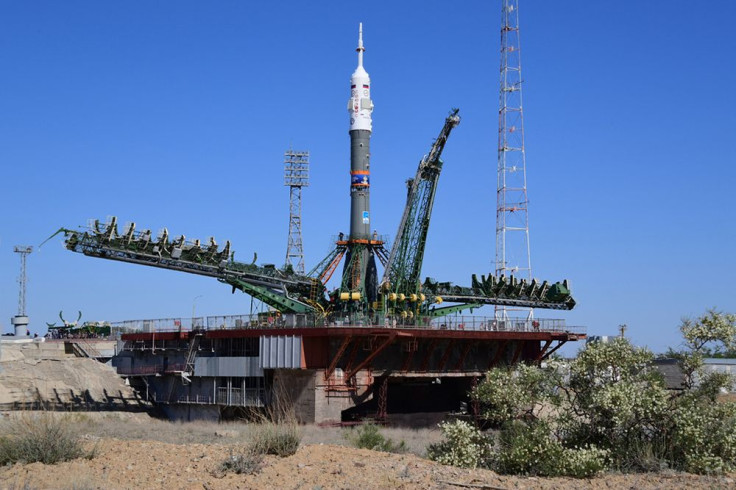ISS Crew Launch Live Stream: Watch Astronauts Fly To The Space Station

A trio of astronauts from NASA, Roscosmos, and the European Space Agency is set to fly to the International Space Station (ISS) on Wednesday, June 6, and space enthusiasts on Earth will get a chance to watch the launch live.
Russian cosmonaut Sergey Prokopyev will be commanding the Soyuz spacecraft designated to take the Expedition 56-57 crew on a trip to the space station. He will be accompanied by flight engineers Serena Auñón-Chancellor and Alexander Gerst on the flight.
The crew will be lifting off on a Soyuz MS-09 rocket from the Baikonur Cosmodrome in Kazakhstan. According to a release from NASA, the launch has been scheduled for 7:12 a.m. EDT, but the coverage will start approximately an hour earlier on NASA TV.
Following blast-off, the Soyuz spacecraft carrying the astronauts will orbit the Earth for about two days. Then, on the morning of June 8, at 9:07 a.m. EDT, it will arrive at the space station’s Rassvet module. Within a few hours from then, the hatches between the spacecraft and the orbital lab will be opened, allowing the astronauts to join the three Expedition 56 crewmembers who are already onboard.
The docking, as well as the entry of the astronauts into their new home, will also be live streamed on NASA TV, with the coverage for the former beginning at 8:15 a.m. EDT. The crew that will be greeting the new astronauts include Station Commander Drew Feustel and Flight Engineers Ricky Arnold and Oleg Artemyev. They have been living on the five-bedroom house-sized space station (from the inside) since March 21 and will introduce all the systems and safety procedures to the newcomers.
Among other things, Feustel and team have also been making preparations for the spacewalk scheduled to install wireless communications gear on the Harmony module next week. They assembled and tested the scientific gear required for the spacewalk, cleaned sample cartridges inside the station’s Electro-Static Levitation Furnace, and prepped Plant Habitat-01 for future botany experiments.
The latest launch to the space station comes just a few days after three members from Expedition 55 – NASA astronaut Scott Tingle, Norishige Kanai of the Japan Aerospace Exploration Agency (JAXA) and Anton Shkaplerov of Roscosmos – returned safely to Earth. They conducted hundreds of experiments during the 168-day-long stay including research into plant growth in space as well as the effect microgravity on bone marrow. ISS expeditions typically last for five to six months, but in March 2016, NASA astronaut Scott Kelly and Russia’s Mikhail Kornienko completed a year-long stay on the station in a bid to bolster research into long-term space travel and its effect.
© Copyright IBTimes 2025. All rights reserved.





















